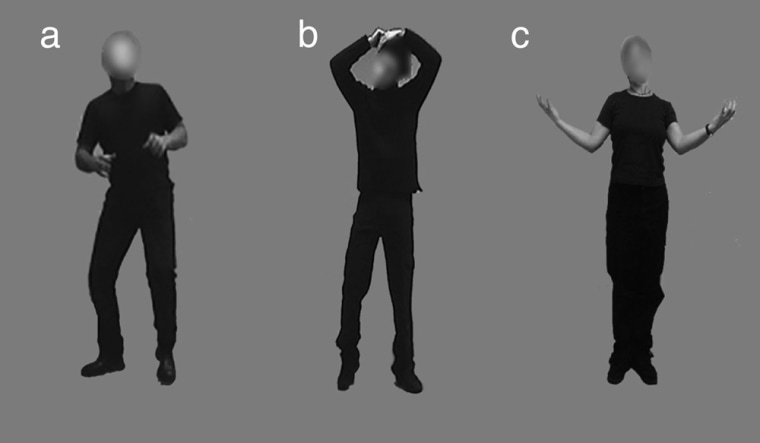A fight breaks out, and even though people at the far side of the crowd can’t see what’s going on, they are immediately on edge.
Now, a Harvard researcher has an explanation for this fear contagion, the quick spread of emotion through a crowd.
Seeing someone adopt a fearful posture triggers areas of the brain that express emotion and get the body primed for action. It’s a response that can race through a crowd like wildfire.
“We are extremely sensitive to emotional body language, and we react to it without us being aware of it,” said Beatrice M.L. de Gelder of Harvard Medical School. This, she said, “is very good, because that puts us in a position to act.”
Most previous studies of the human response to emotional situations have concentrated on facial expressions, de Gelder said.
She wondered if body reactions, as well as the face, could communicate to other people. The results are reported in Monday’s issue of Proceedings of the National Academy of Science.
Scanning a bystander's brain
De Gelder and colleagues photographed actors who posed in a variety of positions, showing happy, neutral and fearful stances. They blanked out the faces and showed the photos to four men and three women, while using magnetic resonance imaging to study their brains.
People looking at the happy and neutral images showed a response in only the part of the brain that processes visual images, they found.
When looking at fearful postures, however, the viewers’ brains responded with activity in the visual, emotional and motor action areas.
It shows that emotions are communicated nonverbally, de Gelder said. “It’s really communicated without any conscious processes involved. It’s really communicated from body to body.”
Stephen Maren, a psychology professor at the University of Michigan, said it has been known that a variety of stimuli can evoke brain responses in emotional areas.
In humans, that has been shown for faces, disgusting odors and verbal threats, he said, indicating that part of the brain receives information from several senses.
“So it’s not surprising that you would be able to demonstrate that postures of fear” provoke a response, he said. “But it hasn’t been shown before.”
Lowest common denominator
Studies of the face have indicated that an emotional response is likely to be more from general expression than from refined, detailed information, he said.
“In some ways you can imagine that posture is one of these low-level sorts of inputs that could be driving the system,” he said.
“You do have to have a system that responds very quickly. ... If it’s something dangerous, you want to act fast; so you want to detect threats at lowest common denominator, and posture could be a good cue,” said Maren, who was not part of de Gelder’s research team.
De Gelder’s research was financed by the National Institutes of Health and Tilburg University in the Netherlands.
